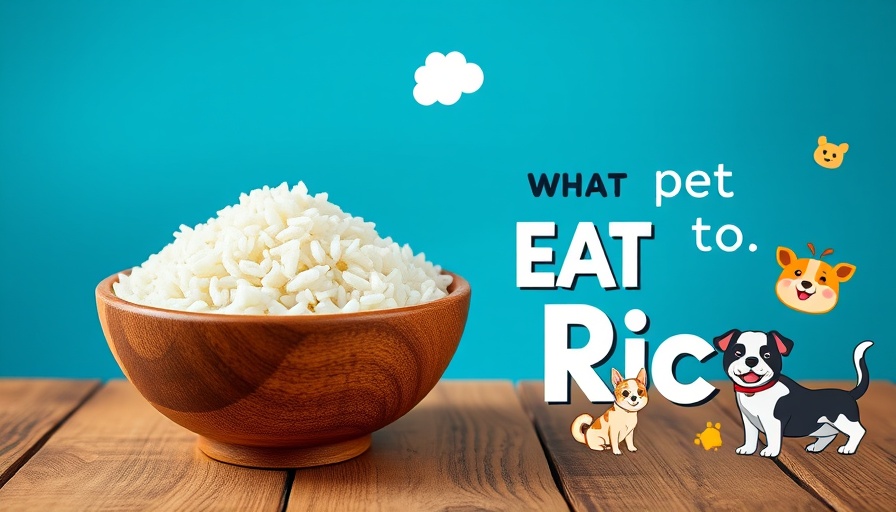
A Closer Look at White Rice for Pets
Fluffy, starchy, and a staple in many households, white rice has been a go-to ingredient in numerous cuisines worldwide. But as pet owners, the question that arises is whether this grain can safely find a place in our furry friends' diets. Let’s explore the nutritional aspects and potential risks associated with feeding white rice to dogs and cats.
Is White Rice Safe for Your Pets?
According to experts, white rice is generally safe for pets. Unlike some human foods that can cause toxicity, this popular grain does not lead to harmful effects when consumed by dogs and cats. Its digestibility is one of its key features, making it an appropriate choice for pets experiencing gastrointestinal disturbances or recovering from illnesses.
However, it's essential to view white rice as a supplementary option rather than a primary food source. The glycemic index for white rice is approximately 66, which indicates it could spike blood sugar levels more than other foods. As pet owners, we must balance our pets' diets with proper nutrients, and excessive carbohydrates can lead to health issues over time.
Understanding the Process of Making White Rice
White rice derives from the same crop as brown rice, but the milling process removes its bran and germ. While this removes impurities and creates a fluffier texture, it also strips away vital nutrients, such as vitamins, minerals, and fiber. Unfortunately, the enriching process employed by many manufacturers may not fully restore these lost nutrients, which is something pet owners should keep in mind.
Potential Risks: Arsenic and Antinutrients
Though generally considered safe, white rice can contain traces of arsenic, a toxic element that poses health risks. Additionally, it may contain antinutrients like phytic acid and lectin, which can interfere with nutrient absorption. To mitigate these risks, soak and thoroughly rinse the rice before cooking. This practice can help reduce the presence of these unwanted compounds, ensuring that your pets' meals remain healthy and safe.
Choosing Quality White Rice
When preparing white rice for your pets, sourcing organic options can be beneficial. Organic farms often have stricter regulations on pesticide and chemical use, directing us away from harmful substances. Opting for organic rice not only protects your pet's health but fosters sustainable farming practices that support safer food systems.
Making White Rice a Part of a Balanced Diet
For those thinking of incorporating white rice into their pets' diets, moderation and balance are key. White rice can be included as part of a nutritious homemade meal or as a non-toxic ingredient in DIY treats. Including lean protein and veggies can transform a simple meal into a well-rounded dish, providing essential nutrients that your pets need to thrive.
A Heartwarming Reminder of Our Bond with Pets
As we reflect on what we feed our beloved companions, it's heartwarming to realize that our pets depend on us for their health and happiness. Ensuring they receive a balanced diet, including occasional treats like white rice, not only satisfies their nutritional needs but solidifies the bond we share with them. Each meal becomes an act of love, reflecting the care we have for our furry friends.
Conclusion: Thoughtful Feeding Choices Matter
It’s essential to approach feeding our pets with thoughtfulness and care, ensuring they receive the right balance of nutrients. While white rice is a safe ingredient to share with dogs and cats, it should be viewed in light of their overall dietary needs. As always, consulting with a veterinarian about specific dietary choices will provide tailored advice, ensuring that your pets lead happy and healthy lives.
 Add Row
Add Row  Add
Add 




 Add Row
Add Row 


 Add
Add
Write A Comment